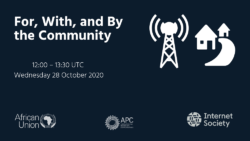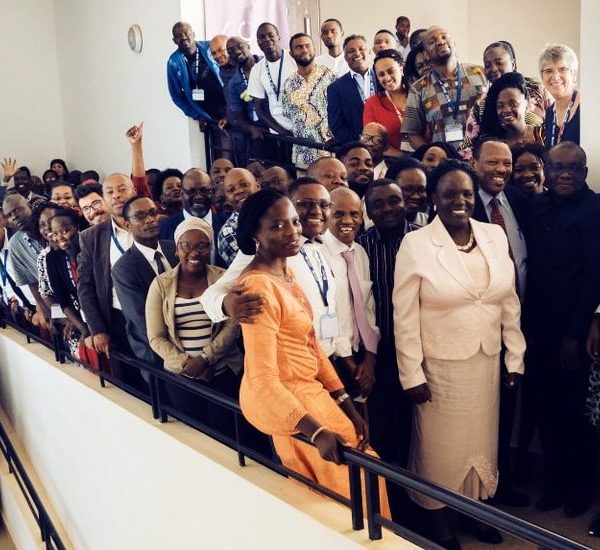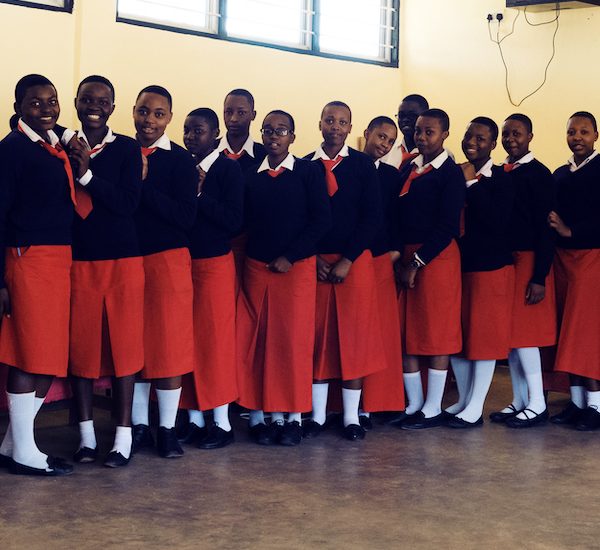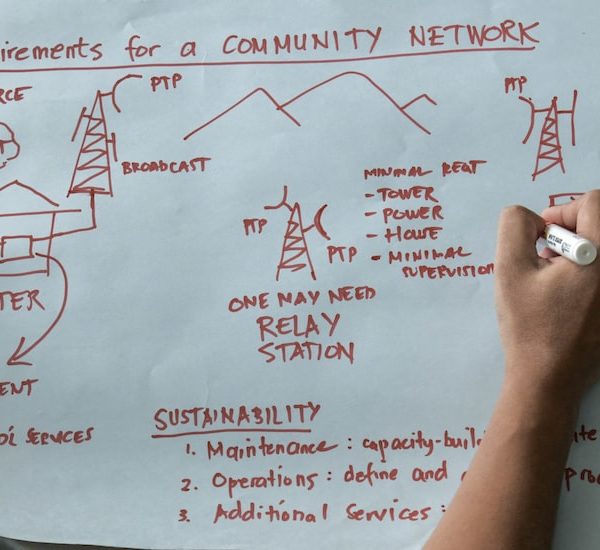Webinar Summary Report
The second session of the Summit on Community Networks (CNs) in Africa outlined community engagement strategies and ownership models for growing community networks in the continent.
Overview of event
The event discussed different methods and experiences that have been used to achieve community ownership and how to keep the community engaged and involved in an inclusive manner, using good governance best practices. It attracted over 80 participants.
The first few minutes of the session were dedicated to honoring a committed member of the Community Network Movement, Chief Francis Kariuki of Lanet-Umoja Community Network in Kenya who had passed away on 21st October. Josephine Miliza, Network Engineer and Africa Regional Coordinator, APC-LOCNET Project opened the session by welcoming Dorcas Muthoni, a Kenyan tech entrepreneur who worked very closely with Chief Francis Kariuki on the Lanet-Umoja Community Network, who paid her tributes. She said Chief Kariuki was a community champion, a great community mobilizer and an example of how public administrators can leverage technology for local development. Participants observed a minute’s silence in honor of Chief Kariuki.
Following this, Josephine gave an overview of the day’s agenda and welcomed the panelists who included representatives from:
- Zenzeleni NPC + Mankosi Cooperative, South Africa – Sol Luca De Tena, acting CEO of Zenzeleni Networks
- Groot-Aub Community Network Namibia – Ghillian Beverley Bock, project coordinator for the Community Network
- Kondoa Community Network, Tanzania – Jabhera Matogoro, CEO Tanzania Community Networks Alliance
Lillian Achom, Co-founder, AccessPlus, moderated the session.
Panel discussion: Community Engagement Strategies and Ownership for Growing Community Networks in Africa
The fourth industrial revolution represents great opportunities that Africa can take advantage of, to foster economic development and growth. The panelists observed that Africa is increasingly embracing digitalization. However, lack of connectivity, expensive Internet charges, unreliable power, limited access to Information and Communication Technology (ICT) tools and poor technological capability is undermining the continent’s growth. This creates digital inequalities; especially for underserved and remote communities that cannot access and take advantage of the technology to better their conditions.
By virtue of adapting to people and their contexts, Community Networks help connect the unconnected in its efforts to reach digital equity. It empowers communities to act and address their communication challenges. The panelists highlighted that communities install, own and operate their own connectivity technologies.
So how did they manage to do it? Could this happen without collaboration and engagement?
Community Engagements
Community members understand their unique local needs and ICT structural challenges best. The communities determine what they do, how they do it and what they envision for their network. Therefore, to reflect the people’s values, Community Networks can only bridge digital divide by working with the community to holistically address all barriers that stand in the way of the people to access the opportunities that the Internet offers.
Community awareness and involvement and communication channels
Business groups such as cooperatives and women groups co-own and manage the Community Network. They are involved in the management of the infrastructure and business of running the network. Like the rest of the community members, they determine the services the network offers, the prices, who is responsible for the nodes, how the income is allocated and take community-based decisions and to a greater extent, contribute to the sustainability of the Community Network.
Traditional community meetings, door-to-door visits and distribution of flyers were noted to be some of the affordable avenues of communication that could be used to create awareness about the positive impact of Community Networks in the community, while focus group discussions help to identify the level of ICT knowledge, community needs and challenges.
Apart from providing technical and end-user skills, capacity building meetings present opportunities for the communities to identify their preferred technical and non-technical community volunteers who will run the Community Network.
Other Stakeholder Engagements
While all panelists commonly singled out the community as the key stakeholder, there is the formal telecom stakeholder group comprising of the telecommunications companies (public or/and private). They play a very important role in the successful establishment of community networks. Often, they practice top-down management and their successes are measured by profit margins, which leaves people’s needs quite far down their priority list.
Panelists shared that it is very important for Community Networks to create relationships with telecoms stakeholders to access bandwidth, source equipment and to learn technical best practices and to ensure that operations are compliant with the regulations.
In the case of Zenzeleni, for example, the complexities of telecoms technology, regulatory framework, the business model and compliance presented an opportunity for Zenzeleni to bridge the gap between the community design and the telecom world. It created the Zenzeleni Non-for-Profit Company (NPC), which is governed by different stakeholders, including the Zenzeleni Co-operatives, the university of Western Cape, the Association for Progressive Communications (APC) and regulatory institutions.
As an enabler and a Bridger, Zenzeleni NPC is always guided by the realities of the communities and they support communities to have access to all the opportunities that they need to strengthen their community-based Internet Service Providers (ISPs). Zenzeleni NPC fosters partnership with experts, advise and support local cooperatives to meet regulatory requirements, offers technological support and business mentorship. This often entails providing information to co-operatives to make more informed decisions to meet sector standards.
On the core component of reaching affordable connectivity, Zenzeleni NPC combines common services and assets to buy bandwidth and equipment in bulk. This leads to high efficiency and cost effectiveness that would not be possible for each cooperative to achieve on its own.
In Namibia, Groot-Aub Community Network collaborates with local initiatives in activities of common interest such as technical and end-user trainings, content development and business-related trainings.
Challenges and Opportunities
One common big challenge for most of the panelists was the issue of licensing for community networks. Groot-Aub Community Network in Namibia, for instance, took seven months to acquire a license to establish its Community Network. This was only successful through collaboration with a locally registered Non-Governmental Organization.
Questions and Answers
During the Question and Answer session, a number of interesting issues were raised by the participants. In particular, the issue of strategies for engaging policy makers and funders to understand the value of taking the long-term approach on community network development. In response, the experts shared the approach is to message community network development as developing social-economic equality which require long term commitments and consistency. Participants were also interested in understanding what technical quality of service measures and indicators community networks use. In the case of Zenzeleni, they shared how they collaborate with partners and engage the community to set their own standards.
Conclusion
A successful Community Network thrives on the involvement of the community and constantly adapts to the realities of the communities that it serves. It needs from inception the involvement of women, people with disabilities, elders and the youth as well as other stakeholders who work together to build, adapt, innovate and maintain the community network.
Written by Lillian Achom, Co-founder, AccessPlus and PC co-chair, Summit on Community Networks in Africa



